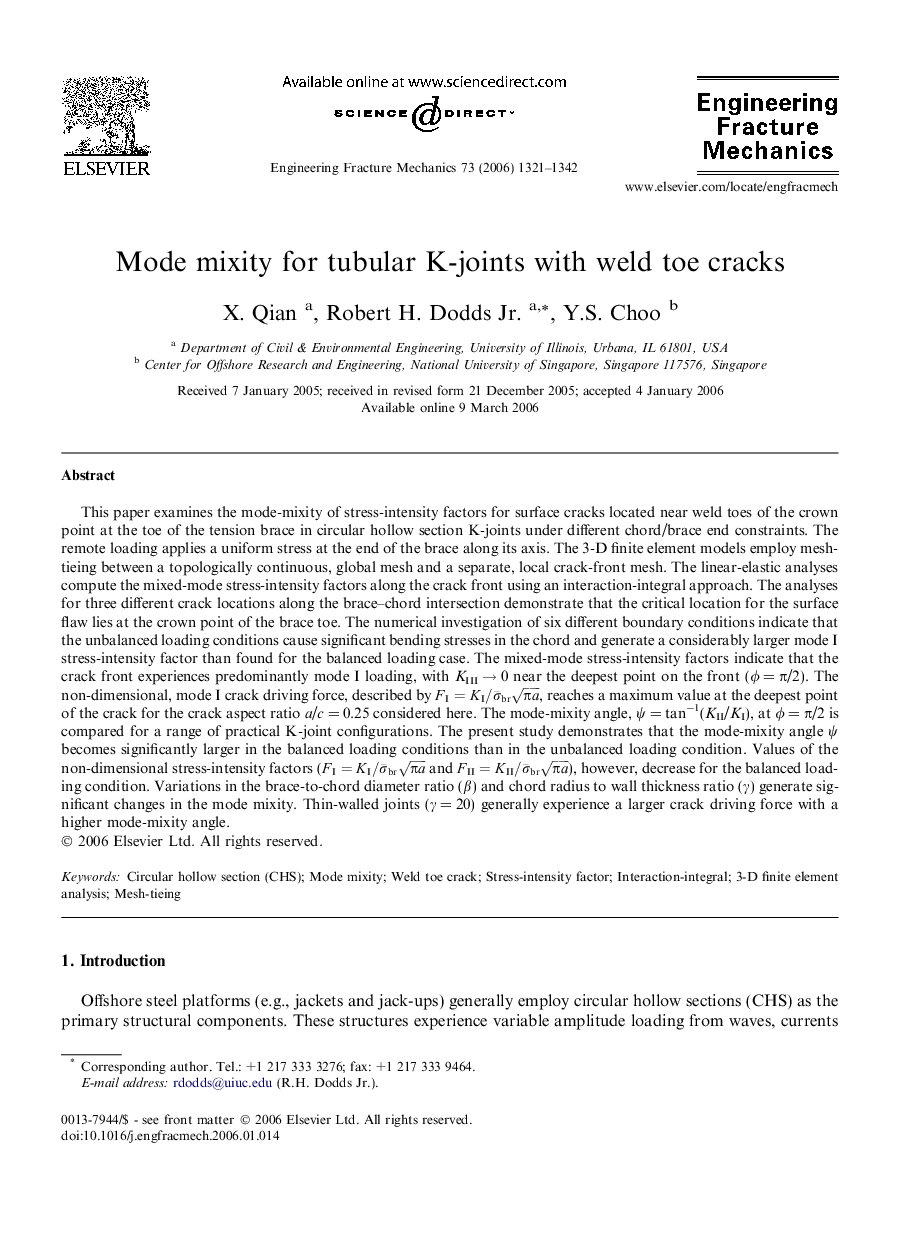| Article ID | Journal | Published Year | Pages | File Type |
|---|---|---|---|---|
| 771471 | Engineering Fracture Mechanics | 2006 | 22 Pages |
This paper examines the mode-mixity of stress-intensity factors for surface cracks located near weld toes of the crown point at the toe of the tension brace in circular hollow section K-joints under different chord/brace end constraints. The remote loading applies a uniform stress at the end of the brace along its axis. The 3-D finite element models employ mesh-tieing between a topologically continuous, global mesh and a separate, local crack-front mesh. The linear-elastic analyses compute the mixed-mode stress-intensity factors along the crack front using an interaction-integral approach. The analyses for three different crack locations along the brace–chord intersection demonstrate that the critical location for the surface flaw lies at the crown point of the brace toe. The numerical investigation of six different boundary conditions indicate that the unbalanced loading conditions cause significant bending stresses in the chord and generate a considerably larger mode I stress-intensity factor than found for the balanced loading case. The mixed-mode stress-intensity factors indicate that the crack front experiences predominantly mode I loading, with KIII → 0 near the deepest point on the front (ϕ = π/2). The non-dimensional, mode I crack driving force, described by FI=KI/σ¯brπa, reaches a maximum value at the deepest point of the crack for the crack aspect ratio a/c = 0.25 considered here. The mode-mixity angle, ψ = tan−1(KII/KI), at ϕ = π/2 is compared for a range of practical K-joint configurations. The present study demonstrates that the mode-mixity angle ψ becomes significantly larger in the balanced loading conditions than in the unbalanced loading condition. Values of the non-dimensional stress-intensity factors (FI=KI/σ¯brπa and FII=KII/σ¯brπa), however, decrease for the balanced loading condition. Variations in the brace-to-chord diameter ratio (β) and chord radius to wall thickness ratio (γ) generate significant changes in the mode mixity. Thin-walled joints (γ = 20) generally experience a larger crack driving force with a higher mode-mixity angle.
